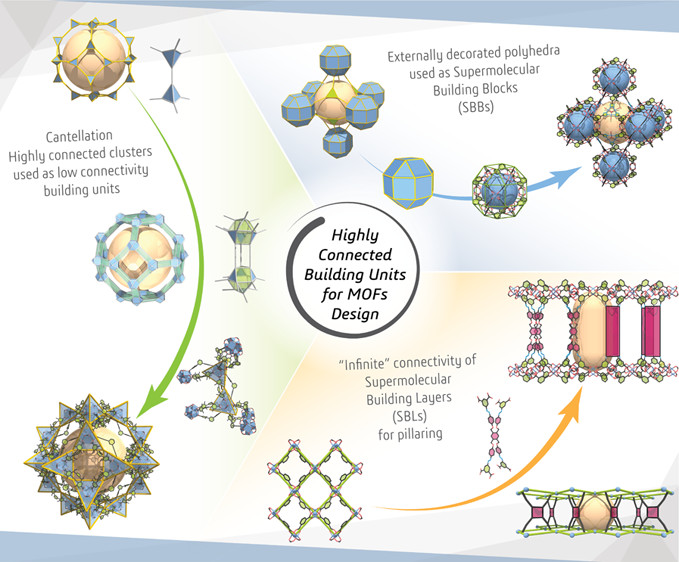

The prediction of crystal structures assembled in three dimensions has been considered for a long time, simultaneously as a chemical wasteland and a certain growth point of the chemistry of the future. Less than 30 years after Roald Hoffmann’s statement, we can categorically affirm that the elevation of reticular chemistry and the introduction of metal−organic frameworks (MOFs) significantly tackled this tridimensional assembly issue. MOFs result from the assembly of organic polytopic organic ligands bridging metal nodes, clusters, chains, or layers together into mostly three-periodic open frameworks. They can exhibit extremely high porosity and offer great potential as revolutionary catalysts, drug carrier systems, sensors, smart materials, and, of course, separation agents. Overall, the progressive development of reticular chemistry has been a game changer in materials chemistry during the last 25 years. Such diverse properties often result not only from the selected organic and inorganic molecular building blocks (MBBs) but also from their distribution within the framework. Indeed, the size and shape of the porous system, as well as the location of active sites influence the overall properties. Therefore, in the continuity of achieving the crystallization of three-periodic structures, chemists and crystal engineers faced the next challenge, as summarized by John Maddox: “it remains in general impossible to predict the structure of even the simplest crystallographic solids from knowledge of their chemical composition”. This is where rational design takes place. In this Account, we detail three specific approaches developed by our group to facilitate the design and assembly of finely tuned MOFs. All are based on careful geometrical consideration and a deep study and understanding of the existing nets and topologies. We recognized that highly connected nets, if possible, edge-transitive, are ideal blueprints because their number is limited in contrast to nets with lower connectivity. Therefore, we embarked on taking advantage of existing highly connected MBBs, or, in parallel, promoting their formation to meet our requirements. This is achieved by utilizing externally decorated metal−organic polyhedra as supermolecular building blocks (SBBs), serving as a net-coding building unit, comprising the requisite connectivity and directional information coding for the chosen nets. The SBB approach allowed the synthesis of several families of SBB-based MOFs, including fcu, rht, and gea-MOFs, that are detailed here. The second strategy is directly inherited from the success of the SBB approach. In seeking highly connected building units, our group naturally expanded its research focus to nets that can be deconstructed into layers, pillared in various ways. In the supermolecular building layer (SBL) approach, the layers have an almost infinite connectivity, and the framework backbone is fixed in two dimensions while the third is free for pillar expansion and functionalization. The cases of trigonal pillaring leading to rtl, eea, and apo MOFs as well as the quadrangular pillaring leading to a family of tbo-MOFs are discussed here, along with recent cases of highly connected pillars in pek and aea-MOFs. Finally, our experience with highly coordinated MBBs led us to develop a novel way to use them as secondary building units of lower connectivity and unlock the possibility of assembling a novel class of zeolite-like MOFs (ZMOFs). The case of the Zr-sod-ZMOFs designed through a cantellation strategy is described as a future leading direction of MOF design.
